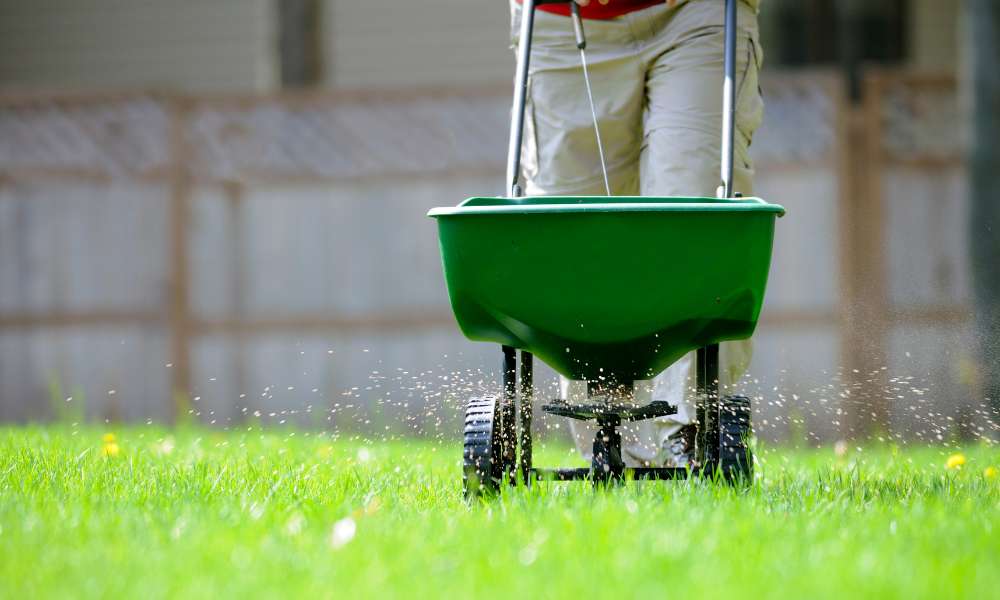Maintaining a vibrant and healthy lawn is a priority for many homeowners, and understanding how to fertilize a lawn properly is essential for achieving this goal. Fertilizing your lawn provides a multitude of benefits, including promoting robust growth, enhancing color, and strengthening grass roots. With the right approach, you can create a thriving lawn that becomes the envy of the neighborhood. In this guide, we will delve into the importance of fertilizing, what factors to consider, and why you should take charge of this crucial aspect of yard care. Whether you’re a seasoned gardener or a novice looking to elevate your yard care routine, mastering the art of fertilizing will help you achieve a lush and verdant landscape that enhances the beauty of your home.
What Is The Best Time Of Day To Apply Fertilizer To My Lawn?
The best time of day to apply fertilizer to your lawn is in the early morning or late afternoon. This timing allows the fertilizer to be absorbed by the grass before the heat of the day sets in, reducing the risk of burning the grass. Applying fertilizer in the early morning also takes advantage of cooler temperatures and higher humidity, which can help with absorption and effectiveness.
Can I Over-Fertilize My Lawn?
Yes, it is possible to over-fertilize your lawn, which can have negative consequences for the health of your grass and the environment. Over-fertilization can lead to excessive growth, weak roots, and increased susceptibility to pests and diseases. Additionally, excess fertilizer can leach into water sources, causing pollution and harm to aquatic ecosystems.
Dealing With Fertilizer Burn
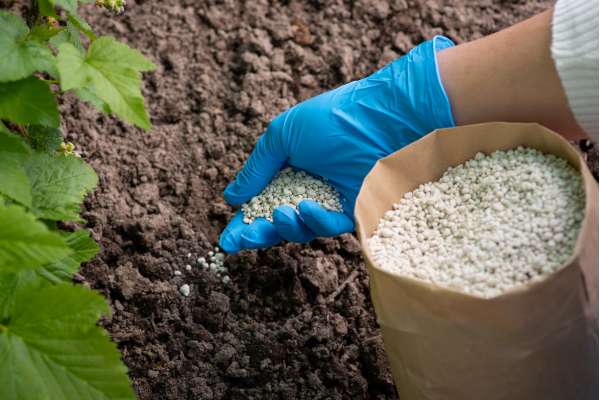
Fertilizer burn can occur when lawn fertilizers are applied excessively or incorrectly. To prevent this issue, it’s essential to follow the recommended application rates and techniques. Additionally, watering the yard thoroughly after fertilization can help dilute the fertilizer and reduce the risk of burn. If fertilizer burn does occur, it’s important to address it promptly by watering the affected areas to flush out excess nutrients and minimize damage to the grass.
Calibrating Drop Spreaders
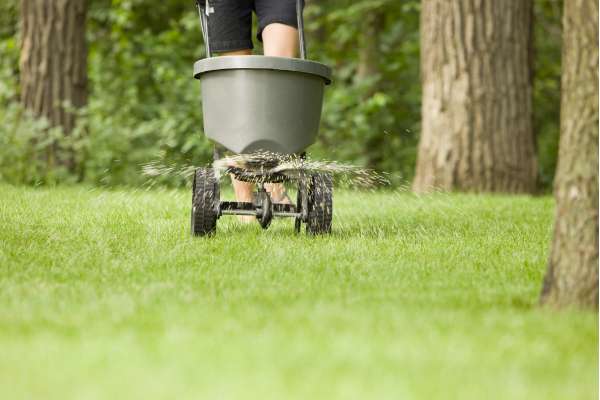
Calibrating drop spreaders is crucial for ensuring accurate and even application of lawn fertilizers. This process involves adjusting the settings on the spreader to match the recommended application rate for the specific fertilizer being used. By calibrating the spreader correctly, you can avoid over- or under-application of fertilizer, which can lead to uneven growth and nutrient deficiencies in the lawn. Regularly checking and calibrating your spreader will help maintain a healthy and vibrant yard.
Avoiding Runoff And Nutrient Leaching
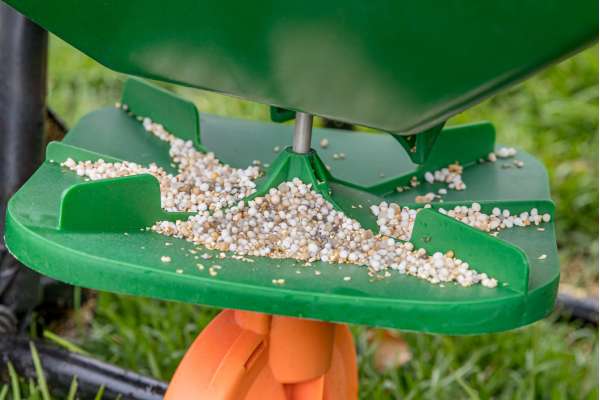
Runoff and nutrient leaching can occur when excess fertilizer is applied to the lawn or during heavy rainfall. This can result in the loss of nutrients from the soil, as well as pollution of nearby water bodies. To avoid runoff and leaching, it’s important to apply fertilizers at the recommended rates and avoid fertilizing before a heavy rainstorm. Using slow-release fertilizers can also help reduce the risk of nutrient loss by releasing nutrients gradually over time, ensuring they are available to the grass when needed.
Use Of Organic Amendments
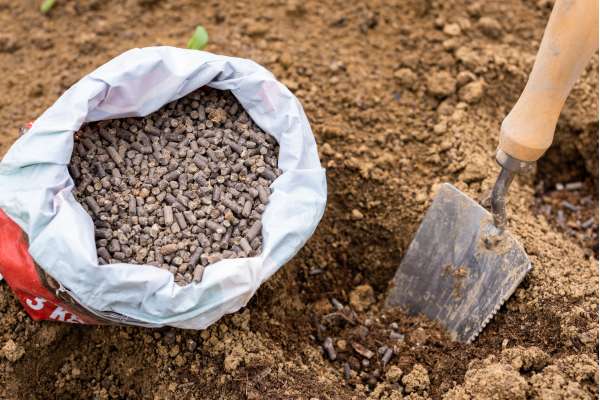
Organic amendments play a crucial role in maintaining soil health and enhancing plant growth. When it comes to fertilizing your yard, opting for organic amendments can offer numerous benefits over synthetic fertilizers. These natural materials, such as compost, manure, and bone meal, not only provide essential nutrients to the soil but also improve its structure and water-holding capacity.
Calibrating Rotary Spreaders
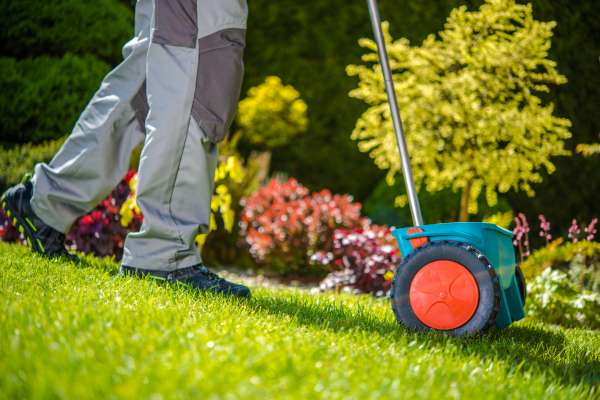
Calibrating rotary spreaders is a crucial step in ensuring an even and effective distribution of fertilizer across your lawn. To calibrate your rotary spreader, start by measuring the area you need to fertilize and determining the appropriate amount of fertilizer needed per square foot. Next, adjust the settings on your spreader according to the manufacturer’s instructions to match the recommended application rate. It’s essential to perform a test run on a small area of your yard to check the spread pattern and make any necessary adjustments before applying the fertilizer to the entire yard. By properly calibrating your rotary spreader, you can avoid under or over-application of fertilizer, resulting in a healthier and more evenly fertilized yard.
Preparing Your Lawn For Fertilization
1. Soil Testing
Before applying fertilizer, it’s essential to conduct a soil test to determine your lawn’s nutrient levels and pH balance. Soil testing kits are readily available at garden centers or through professional services. Understanding your soil’s composition helps you choose the right fertilizer and avoid over-fertilization.
2. Weed Control
Weeds compete with grass for nutrients, water, and sunlight, affecting your lawn’s overall health. Before fertilizing, address any existing weed problems with targeted treatments or manual removal to prevent them from absorbing nutrients intended for your grass.
Choosing The Right Fertilizer
1. Nitrogen, Phosphorus, And Potassium (Npk)
Nitrogen is vital for promoting lush, green foliage and stimulating overall plant growth. It is responsible for enhancing the color and density of the grass blades, giving your lawn that vibrant, healthy appearance. Phosphorus, on the other hand, is essential for root development and overall plant vigor. It aids in the establishment of a strong root system, which is crucial for the uptake of water and nutrients from the soil. Lastly, potassium plays a key role in strengthening the grass plants and improving their resilience to environmental stresses such as drought, disease, and extreme temperatures.
2. Organic Vs. Synthetic Fertilizers
Organic fertilizers are derived from natural sources such as compost, manure, or plant-based materials. They release nutrients slowly over time, providing a steady and consistent source of nourishment for your land. Organic fertilizers also improve soil health by promoting microbial activity and enhancing soil structure.
Proper Disposal Of Fertilizer Containers
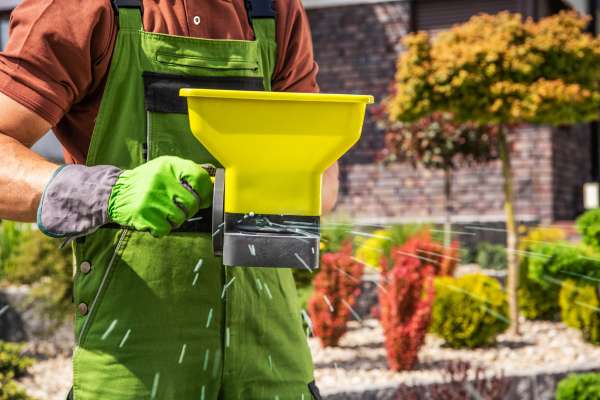
Proper disposal of fertilizer containers is often overlooked, but it is a crucial step in maintaining a clean and eco-friendly lawn care routine. Recycling or disposing of containers in an environmentally responsible manner helps reduce waste and minimizes the ecological impact of your land maintenance activities. By adopting proper disposal practices, you contribute to a sustainable approach to yard care, benefiting both your immediate environment and the broader ecosystem.
Drought-Resistant Grass Varieties
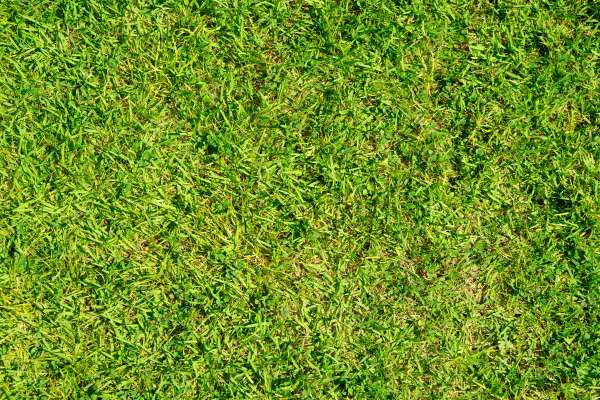
Proper lawn care techniques are also essential in maintaining drought-resistant grass varieties. When mowing your lawn during dry periods, it’s advisable to adjust the height of the mower blades to ensure that you’re not cutting the grass too short. This will help promote deeper root growth and improve its ability to withstand drought stress. Regularly watering deeply but infrequently can also aid in developing a robust root system, allowing your drought-resistant land to thrive even in challenging weather conditions.
The Final Thought
To fertilize your lawn is a crucial aspect of maintaining its health and appearance. By following the proper guidelines for application timing, choosing the right type of fertilizer, and ensuring even distribution, you can promote lush growth and a vibrant green color in your grass. It is important to remember to water your lawn after fertilizing to activate the nutrients and prevent burning. Regular fertilization will help strengthen your turf against weeds, diseases, and environmental stressors. Take the necessary steps now to fertilize your lawn and enjoy a beautiful, thriving outdoor space for years to come.
